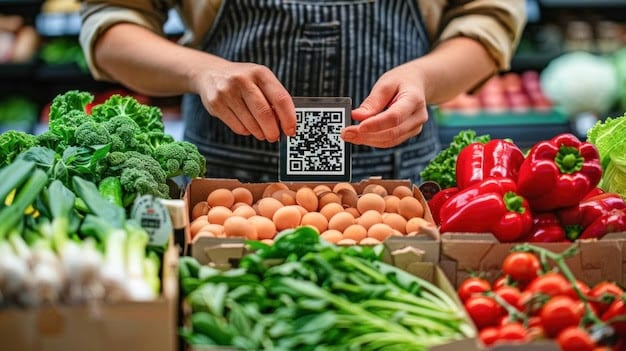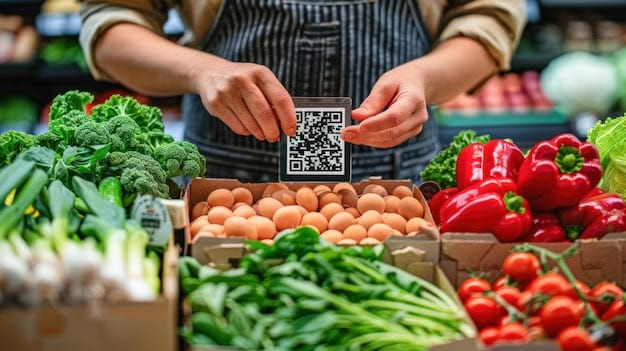
A few decades ago, shopping was dangerous. There were many scandals and the most important ones concerned flour where mixtures were classic and gave fatal accidents. The cans, packets and containers had no ingredient labels, let alone nutritional information. With no obligation to tell people what was in their products or what it meant for their health, manufacturers inserted all sorts of unpleasant substances.
Food manufacturers sprinkled copper sulfate – a garden pesticide that can burn the skin – into canned vegetables to make them look greener. To extend shelf life, some manufacturers even added formaldehyde or borax – a laundry detergent – to meat and dairy products. In France and northern Europe, arsenic was used to color green candies, while lead was added to red or yellow candies, as well as to color cheese.
Forcing stricter labeling rules on a reluctant food industry took decades of lobbying and research. To bolster his case, one American scientist even set up a controlled experiment feeding meals of contaminated food to a group of willing young men – Blum’s “poison squad” – to demonstrate that such foods could harm their health. Many healthy volunteers in the squad became ill, a consequence that U.S. lawmakers could no longer ignore.

Now, processed foods are packaged with an abundance of information about their contents. But that doesn’t mean that this labeling is always easy to decipher. If you look closely at a package or box, you’ll find various chemicals, codes, weights and percentages, while on the front are health statements and claims that are not as simple as they seem. There are tips for deciphering a food label.
First, it is clear that food regulations differ from country to country. It would therefore take more than a single article to describe the labeling conventions of each country. The United Nations/WHO Codex Alimentarius provides an international set of labeling standards, but this “food code” is voluntary and is applied in different ways around the world. For nutrition labeling, most of the world’s major economies make it mandatory, including the U.S., India, China, Japan, Australia and members of the EU. But for some, it is voluntary, unless a health claim is made, as in Turkey, Singapore or South Africa.

Overall, most labels include a list of ingredients and information on the nutritional value of the product: calories, fats, sugars, salt, etc. In recent decades, manufacturers have also begun to add health and wellness benefits, knowing that this helps sell their products.
The manufacturers are clever and they don’t indicate on the front that the ingredients are ranked from most predominant to least predominant by weight. So far, so obvious, you might say. But it does lead to some labelling tricks. For example, if you take a closer look at the label of a hazelnut spread, beyond the images of nuts on the front, you’ll notice that the first (and therefore most important) ingredient is actually sugar, often followed by oil. The same pattern can be seen with breakfast cereals: even if a box says “whole wheat” in big letters on the front, the ingredients often list sugar as second. Some brands of frosted flakes, for example, contain 37g of sugar per 100g of cereal. That’s about the same proportion as in a chocolate chip cookie.

In the EU-27, manufacturers prefer a system of short codes to describe additives called “E-numbers”, which have acquired a controversial – and sometimes undeserved – reputation over the years as dangerous and mysterious chemicals. Some, like the artificial coloring E122 found in cakes and candies, can have harmful effects on children prone to hyperactivity. But others are good for you, or at least harmless: E300 is vitamin C, E948 is oxygen and E160c is paprika.
In North America there is no such coding, and these additives are described by their chemical name. Thus, on a U.S. label, you will read “sodium caseinate”, rather than “E469”. At first glance, this seems clearer, but even this convention is a bit obtuse as to what the product actually is: sodium caseinate is used in foods such as sausages or bread, and is the main ingredient in coffee creamer, but neither its E-number nor its chemical name tells you that it is a protein derived from milk.

There is another difference between countries when it comes to sodium: North America lists the sodium content of their products (especially on nutrition labels, which we will discuss later), while the EU-27 lists salt. Salt may be one type of sodium, but sodium is a category that also includes the caseinate additive just mentioned, as well as other ingredients such as baking soda.
Finally, a mixed structure-function statement is intentionally vague, such as “calcium strengthens bones. The key to these claims is that they do not (and cannot) make specific promises to improve health, and should be considered only as marketing language.
There are typographical and fine print manners, many manufacturers – in the U.S. and around the world – attempt to amplify the health benefits and mitigate the drawbacks. In a recent study of breakfast cereals in Australia, for example, 83% of children’s cereals carried a nutritional or health claim, such as “high fiber” or “low salt,” while the majority were rated as overall poor health or nutrition. Other notable examples found on supermarket shelves include “low-fat” yogurts that should instead be labeled “high sugar”.
There is no safe country in the world, so it is best to do some research on what you see on a label. While it may appear to be comprehensive and detailed, there are often more health claims, ingredients or nutritional information than what is actually on the package. Food labeling has come a long way since the days when milk contained formaldehyde and candy contained arsenic, but that doesn’t mean a label tells you everything.




